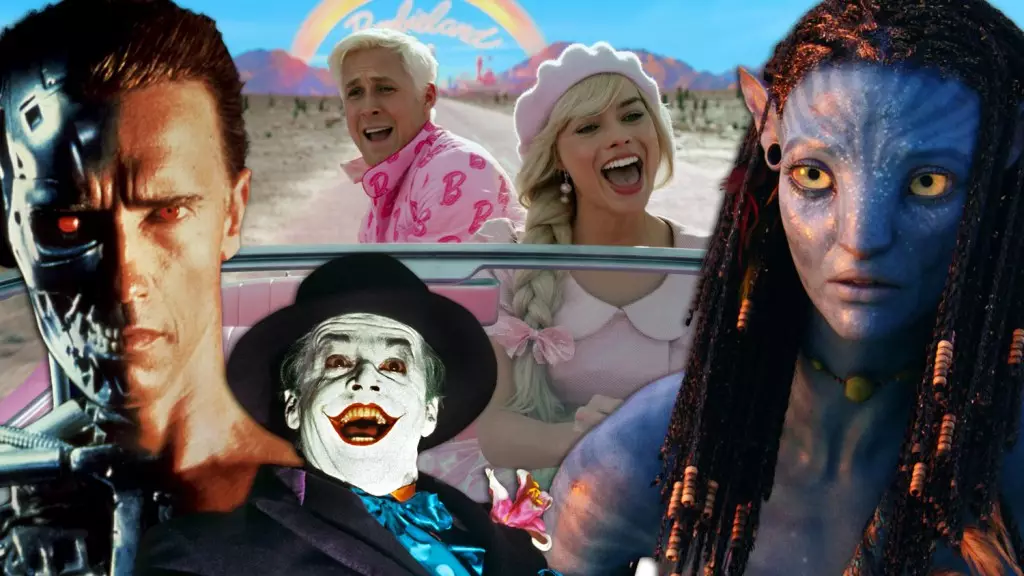The North American box office has long been a barometer for not only cinematic quality but also audience taste. Since 1977, a diverse array of films has roared their way to the top, showcasing the shifting landscape of movie-making. From beloved animated features to action-packed superhero sagas, the box office stalwarts reflect changing cultural narratives and technological innovations in filmmaking. In this article, we’ll dissect the trends that have defined this elusive realm of entertainment while shedding light on notable entries from the most financially impactful films over the decades.
When examining the highest-grossing titles in North America, a clear dominance emerges among specific categories—namely superhero films, animated features, and the ever-popular franchises like Star Wars and Harry Potter. The latest champion, “Inside Out 2,” released by Walt Disney Studios Motion Pictures, proudly joins a roster of films that have grossed over $600 million domestically—solidifying the idea that sequels and franchises continue to flourish in today’s market.
Historically, these films have benefitted from existing fanbases and expansive marketing strategies. Each release is meticulously planned to maximize audience engagement, often resulting in box office records. For instance, look to “Avengers: Endgame,” which not only brought together a diverse cast but also capitalized on over a decade of interconnected storytelling, enhancing its appeal.
Another notable trend is the unyielding success of animated films. Collectively, titles like “Frozen II,” “Finding Dory,” and various Pixar offerings have garnered substantial box office figures. The unique ability of animated films to resonate across age groups gives them a distinct advantage. These movies often transcend cultural barriers, with universal themes of love, friendship, and adventure.
For example, “Frozen II,” released by Walt Disney Studios, managed to earn an impressive $858 million in North America, indicating a penchant for well-crafted animated storytelling. As the industry evolves, animation techniques continue to improve, allowing for richer storytelling experiences that resonate deeply with audiences, hence driving box office sales further.
The Power of Franchises
The phenomenon of franchises cannot be overlooked. Films like “Harry Potter” and “Star Wars” have not only captivated audiences but have also generated significant revenue streams through various media avenues including merchandise and theme parks. Franchises build robust universes that invite audiences to engage with expansive narratives, making it more likely for viewers to return for sequels.
The Harry Potter series, for instance, has inspired an entire generation, with each installment performing exceptionally well at the box office. Its influence has endured well beyond the final film’s release—underscoring the notion that storytelling continuity is a powerful asset in filmmaking.
While the landscape is currently dominated by certain genres and franchises, there lies peril in over-reliance on existing intellectual properties, as it may lead to audience fatigue. Additionally, the pandemic disrupted traditional viewing patterns—streaming became a formidable competitor to theaters. However, as the world adapts, filmmakers may find new opportunities and audiences for original storytelling.
Hollywood has increasingly begun experimenting with diverse narratives, offering a glimpse into international cinema and less mainstream genres. The digital era has further empowered indie filmmakers and smaller studios to resonate with niche audiences, indicating a future where diverse voices may begin to share the box office spotlight.
The North American film box office functions as a dynamic canvas illustrating evolving audience preferences, industry trends, and cultural undercurrents. The success of films like “Inside Out 2” reflects strategic marketing, established franchise loyalty, and innovative storytelling. As we move forward, it will be essential for filmmakers to embrace originality while respecting the traditions that brought audiences into theaters initially. In recognizing these patterns, we may not only celebrate the past but also pave the way for the future of cinema, welcoming a new era of films that captures the imagination of a diverse audience.

Leave a Reply